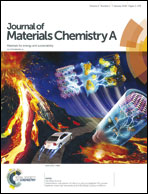Transition-metal-based layered double hydroxides tailored for energy conversion and storage
Abstract
Currently, energy storage devices draw considerable attention owing to the growing need for clean energy. The depletion of fossil fuels and the generation of greenhouse gases have led to the development of alternative, environmentally friendly energy storage devices. Supercapacitors with high power densities are excellent devices for energy storage. Although carbon-based materials are widely used in such devices, their non-faradic behavior in electrical double layer capacitors (EDLCs) limits the maximum power density that can be generated. In contrast, the faradaic mechanism of transition metal hydroxides results in better capacitance rates along with good stability during cycling. This review is confined to nickel cobalt layered double hydroxides (NiCo LDHs) classified based on the fabrication of electrodes for application in supercapacitors. We discuss the growth of the active LDH material in situ or ex situ on the current collector and how the synthesis can affect the crystal structure as well as the electrochemical performance of the electrode.

- This article is part of the themed collection: Recent Review Articles


 Please wait while we load your content...
Please wait while we load your content...